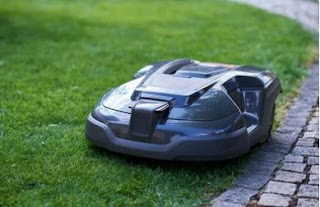Predictions for Robotic Lawn Mowers - 2023 to 2028
In recent years, robotic lawn mowers have gained significant popularity among homeowners. These autonomous devices have revolutionized the way we maintain our lawns, offering convenience, efficiency, and time savings. As we look ahead from 2023 to 2028, several exciting advancements and trends are expected to shape the future of robotic lawn mowers. In this blog, we will explore some of the predictions for this technology and how it will continue to transform lawn care.
Enhanced Navigation and Mapping Capabilities
One of the key areas of development for robotic lawn mowers is their navigation and mapping capabilities. In the coming years, we can expect significant advancements in this area, allowing these devices to navigate complex terrains, handle obstacles more effectively, and create more accurate maps of the lawn. With improved sensors and artificial intelligence algorithms, robotic lawn mowers will be able to adapt to changing environments, avoiding potential hazards such as flower beds, trees, and garden ornaments.
Integration with Smart Home Systems
As the Internet of Things (IoT) continues to expand, robotic lawn mowers will integrate seamlessly with smart home systems. Homeowners will have the ability to control their robotic mowers using voice commands through virtual assistants like Amazon Alexa or Google Assistant. Additionally, these devices will be able to communicate with other smart devices in the home, such as weather stations, to adjust their mowing schedules based on real-time weather conditions.
Multi-Zone Management and Customization
Currently, many robotic lawn mowers are designed to handle a single zone or lawn area. However, future models will likely offer multi-zone management, allowing homeowners to set up different mowing schedules and parameters for various sections of their lawn. This feature will be particularly useful for those with larger properties or complex landscaping designs. Additionally, customization options will become more robust, enabling users to define specific mowing patterns and preferences tailored to their individual needs.
Integration with Lawn Health Monitoring
In the near future, robotic lawn mowers will go beyond simply cutting grass. They will be equipped with advanced sensors that can monitor the health of the lawn. These sensors will detect factors such as soil moisture levels, nutrient deficiencies, and weed infestations. Based on this data, the robotic mower will adjust its mowing patterns and alert the homeowner if any corrective actions are required. This integration of lawn health monitoring will contribute to healthier and greener lawns.
Increased Battery Efficiency and Longer Run Times
Battery technology is a critical factor in the performance and usability of robotic lawn mowers. Currently, most models offer a runtime of a few hours before requiring recharging. However, with ongoing advancements in battery technology, we can expect longer run times and improved energy efficiency. Lithium-ion batteries, for example, are becoming increasingly popular due to their higher energy density and longer lifespan. These advancements will enable robotic mowers to cover larger areas without interruption and reduce overall maintenance requirements.
Robotic Lawn Mowers as Landscaping Assistants
Beyond their primary function of mowing, robotic lawn mowers will evolve into versatile landscaping assistants. Future models may include additional attachments or modules for tasks such as leaf blowing, weed trimming, and even small-scale irrigation. These multi-functional devices will save homeowners both time and effort by automating various aspects of lawn maintenance.
Improved Connectivity and Cloud-Based Data Analysis
Cloud connectivity will play a significant role in the future of robotic lawn mowers. By leveraging cloud-based platforms, these devices will have access to real-time weather data, mapping updates, and software upgrades. Additionally, the data collected by individual robotic mowers can be analyzed on the cloud to provide valuable insights and recommendations to homeowners. This data-driven approach will help optimize mowing schedules, adjust cutting heights based on grass growth rates, and even provide personalized suggestions for lawn care practices.
Read also: Complete Guide to Buying the Best Robotic Mower
Conclusion
The predictions for robotic lawn mowers from 2023 to 2028 indicate an exciting future for this technology. With enhanced navigation and mapping capabilities, integration with smart home systems, and improved connectivity, these autonomous devices will become even more efficient and user-friendly. The ability to monitor lawn health, longer battery run times, and multi-functional features will further elevate the benefits provided by robotic mowers. As we move forward, homeowners can look forward to spending less time on lawn maintenance and more time enjoying their beautifully manicured lawns, thanks to the advancements in robotic lawn mower technology.




Comments
Post a Comment